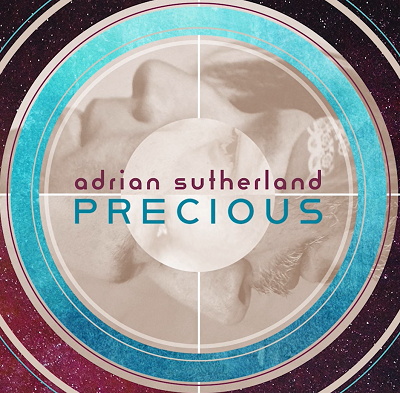Adrian Sutherland – Precious” / “Diamonds

Adrian Sutherland, the roots-rock visionary hailing from the majestic terrains of Canada’s Far North, is poised to make an indelible mark with his forthcoming album, “Precious Diamonds“. The prelude to this musical expedition comes in the form of two arresting singles, “Precious” and “Diamonds,” each a testament to Sutherland’s genre-blurring artistry and profound connection to his Indigenous roots.
In the soul-stirring “Precious,” Sutherland channels the emotive depths of blues and rock legends, with a vocal prowess that echoes the gravelly authenticity akin to the blues-rock realm. The resonances of the Black Keys come to mind, yet Sutherland’s narrative goes beyond mere homage. It’s a poignant exploration of oppression and the ongoing global fight for freedoms and rights. The infusion of powwow singing adds a layer of cultural resonance, weaving a tapestry that is as rich and complex as the landscapes he draws inspiration from.
“Diamonds,” on the other hand, reveals a different facet of Sutherland’s sonic palette. Uplifting and rooted in his First Nation/Cree culture, the track explores the profound belief that humanity originated from the sky and was made from the sun.
Here, Sutherland’s vocals take on a nuanced quality, reminiscent of the storytelling prowess seen in the works of Native American artists like Robbie Robertson. The incorporation of accordion and B3 organ adds a contemporary touch, creating a sonic terrain that is both expansive and rooted in tradition.
It’s essential to recognize Sutherland not just as a musician – his upcoming album, “Precious Diamonds,” signals a chapter in his career that resonates with the legacy of Indigenous artists who’ve used their art to bridge cultural divides and ignite conversations. Much like Robbie Robertson’s groundbreaking work with The Band, Sutherland navigates the complexities of cultural representation with a finesse that extends beyond the lyrical content of his songs.
The parallels with other Native American musical luminaries are evident, but Sutherland’s unique voice and approach carve a distinct niche. While Buffy Sainte-Marie channeled activism through her music, Sutherland’s narratives span a spectrum that speaks to universal struggles, adding a layer of cultural complexity to his storytelling.
A Tribe Called Red’s fusion of traditional Indigenous sounds with contemporary beats finds a reflection in Sutherland’s ability to seamlessly blend cultural elements within a modern musical context.
The use of Cree language in “Notawe (Father)” signifies not only a linguistic exploration but a cultural reclamation—a gesture reminiscent of Susan Aglukark’s groundbreaking inclusion of Inuktitut in her music. In the heart of storytelling,
Sutherland shares not only personal narratives but becomes a conduit for societal issues, mirroring the folk-infused storytelling traditions seen in the works of Bill Miller.
In the ever-evolving landscape of Indigenous musical expression, Adrian Sutherland’s work stands as a testament to the enduring power of storytelling.
As the curtain rises on “Precious Diamonds,” he not only pays homage to the musical traditions that preceded him but crafts a sonic narrative uniquely his own. In true Rolling Stone spirit, Sutherland’s music isn’t just a listening experience; it’s an invitation to delve into the cultural tapestry he weaves, igniting conversations and leaving an indelible mark on the musical zeitgeist.
The anticipation for “Precious Diamonds” isn’t just about an album release; it’s about witnessing the emergence of a cultural luminary whose voice will echo far beyond the realms of melody and rhythm.
Check out Adrian’s official website by clicking here.




